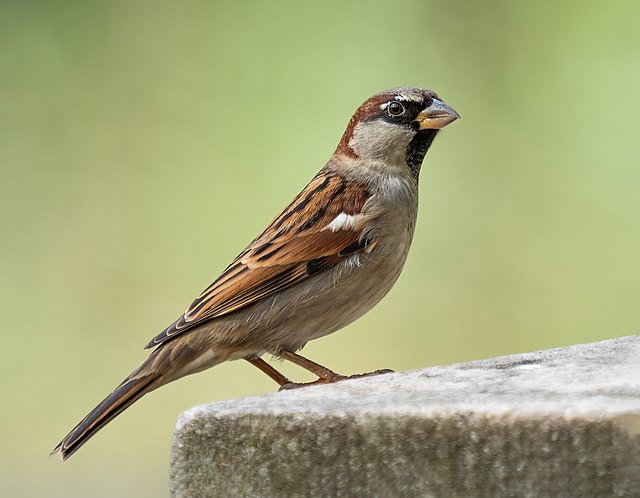The Sind sparrow is a passerine bird of the sparrow family, Passeridae, found around the Indus valley region in South Asia specially Sindh. It is also known as the jungle, Sind jungle, or rufous-backed sparrow. Very similar to the related house sparrow, it is smaller and has distinguishing plumage features. As in the house sparrow, the male has brighter plumage than female and young birds, including black markings and a grey crown. Distinctively, the male has a chestnut stripe running down its head behind the eye, and the female has a darker head than other sparrow species. Its main vocalisations are soft chirping calls that are extended into longer songs with other sounds interspersed by breeding males. Historically, this species was thought to be very closely related to the house sparrow, but its closest evolutionary affinities may lie elsewhere. The species was discovered around 1840, but went undetected for several decades afterwards.
Sind sparrow
Female at National Capital Region, Delhi.
Illustration of a pair by John Gerrard Keulemans, 1888
Nest at Sultanpur National Park in India
Old World sparrows are a group of small passerine birds forming the family Passeridae. They are also known as true sparrows, a name also used for a particular genus of the family, Passer. They are distinct from both the New World sparrows, in the family Passerellidae, and from a few other birds sharing their name, such as the Java sparrow of the family Estrildidae. Many species nest on buildings and the house and Eurasian tree sparrows, in particular, inhabit cities in large numbers. They are primarily seed-eaters, though they also consume small insects. Some species scavenge for food around cities and, like pigeons or gulls, will eat small quantities of a diversity of items.
Old World sparrow
Male house sparrow in Germany
Yellow-throated sparrow at Keoladeo National Park, India
Sparrow in Tharparkar, Sindh








